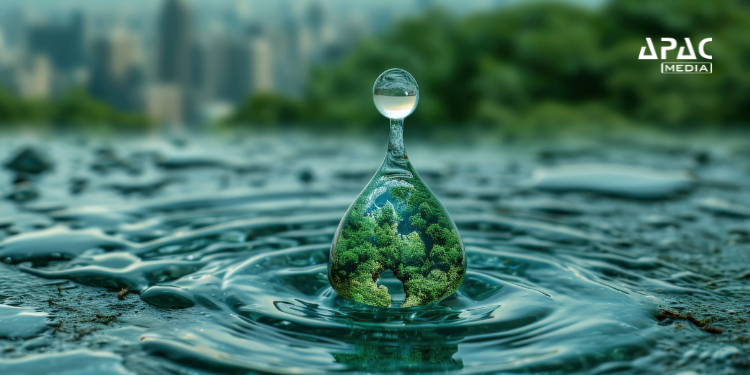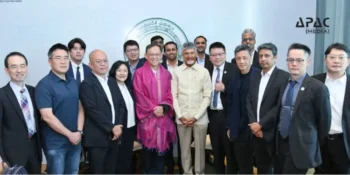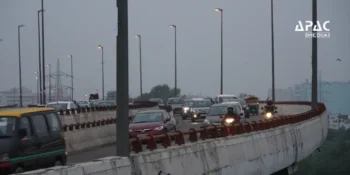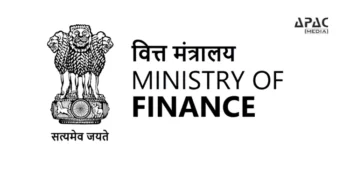Water is one of the most critical resources for sustaining life, livelihoods, and economic growth. As climate change, increasing population, and urbanisation strain existing water systems, the need for sustainable water management has become more urgent than ever. Ensuring water security now requires a mix of traditional infrastructure, modern technology, community participation, and data-driven planning to meet the demands of agriculture, industry, and households across the country.
Recognizing this, the Department of Water Resources, River Development, and Ganga Rejuvenation, under the Ministry of Jal Shakti, undertook several transformative initiatives to address India’s pressing water challenges during 2024-2025.
From ambitious river-linking projects and large-scale irrigation efforts to flood management, groundwater conservation, and cutting-edge technology adoption, the department’s initiatives reflect a clear shift toward integrated and sustainable water resource management.
Here’s an overview of the major initiatives undertaken during the year.
Development of Water Resource Management
Launch of the Ken-Betwa Link Project: The launch of the Ken-Betwa Link Project on October 25, 2024, marked India’s first river interlinking effort. Aimed at irrigating 10.6 lakh hectares annually and benefiting 62 lakh people in Bundelkhand, it promises a significant boost to water availability in one of the most drought-prone regions. The project is planned to be completed by 2030.
Parbati-Kalisindh-Chambal Link Project: The Parbati-Kalisindh-Chambal Link Project, formalised through an MoU amongst the states of Rajasthan and Madhya Pradesh and the Ministry of Jal Shakti in December 2024, targets irrigation for 10 lakh hectares and drinking water supply to 21 districts across both states by linking key rivers in the Chambal Basin. The project is designed to supply drinking water to 21 newly formed districts in Eastern Rajasthan, along with several towns and villages along the route. It will also meet the industrial water needs of the Delhi-Mumbai Industrial Corridor (DMIC).
In addition, the project will bring irrigation to over 2.5 lakh hectares of new command area, stabilize irrigation across 1.5 lakh hectares of existing farmland in Rajasthan, and provide annual irrigation to 6 lakh hectares in Madhya Pradesh. Several districts in Madhya Pradesh, including Shivpuri, Gwalior, Bhind, and the Malwa region, will also benefit from improved drinking water supply.
Kosi-Mechi Intra-State Link Project: The Kosi-Mechi Intra-State Link Project in Bihar, supported with over Rs 3,600 crore under Pradhan Mantri Krishi Sinchayee Yojana – Accelerated Irrigation Benefits Programme (PMKSY-AIBP), is expected to provide irrigation to 2.1 lakh hectares by connecting the Kosi and Mechi rivers.
Polavaram Irrigation Project: The Polavaram Irrigation Project in Andhra Pradesh received an additional sanction of Rs 12,000 crore in central support, aiming to bring water to 1.2 lakh hectares of land for irrigation and provide safe drinking water to over 10 lakh people in 246 villages of Vishakhapatnam, Ankapalli, and nearby towns in Andhra Pradesh.
Water Resource Conservation under Jal Sanchay Jan Bhagidari
Launched by Prime Minister Narendra Modi on September 6, 2024, in Surat, Jal Sanchay Jan Bhagidari is a nationwide campaign under Jal Shakti Abhiyan: Catch the Rain. The initiative aims to improve water conservation and recharge through aquifer and borewell recharge, recharge shafts, and rainwater harvesting, with active community participation and support from various stakeholders.
Under the campaign, more than 10 lakh water recharge structures have already been completed, demonstrating strong community participation and rapid progress in water sustainability.
Water Resources Planning
In order to assess the quality of water resources in India, a Basin-wise Assessment Report was released in July 2024, placing India’s annual water availability at 2,116 billion cubic metres (BCM). A separate Compendium on Sedimentation of Reservoirs analyzed data from 548 reservoirs, helping optimize water storage and usage.
On December 31, 2024, the Groundwater Resource Assessment Report and Annual Groundwater Quality Report indicated an overall improvement in groundwater levels, reflecting the success of ongoing conservation measures.
Modernisation of Command Area Development (M-CADWM)
To improve irrigation efficiency, the M-CADWM project was launched under PMKSY. It focuses on modern techniques like pressurised pipeline networks, IoT integration, and SCADA systems to ensure equitable water distribution and reduce wastage.
Under the revamped scheme, pilot M-CADWM projects will be launched across different agro-climatic zones in the country. These pilots will incorporate institutional, technical, and management reforms in command area development and water management. Insights gained from the design and implementation of these projects will form the basis for shaping a comprehensive National Plan for Command Area Development and Water Management.
Flood Management
In order to enhance India’s flood preparedness, the Flood Watch India 2.0 mobile app was launched on August 13, 2024. The app provides real-time forecasts from over 200 stations and tracks storage data from 150 major reservoirs, supporting timely action by local authorities.
Atal Bhujal Yojana
In 229 blocks across seven states—Rajasthan, Gujarat, Karnataka, MP, Maharashtra, Haryana, and UP—the Atal Bhujal Yojana has become a model for community-led groundwater management!
The scheme was launched in 2020 for groundwater management with a total budget outlay of Rs 6,000 crore. Over 77,000 water conservation structures have been built, benefiting nearly 6.7 lakh hectares. More than 1,300 gram panchayats and 61 blocks have reported improved groundwater levels, saving or recharging 2,359 MCM of water.
River Rejuvenation
Under the Namami Gange programme, 29 projects were completed during 2024-2025, with 36 new ones sanctioned, bringing the total to 494.
In the sewerage sector, 13 new projects were approved to build or upgrade 400 million liters per day (MLD) of sewage treatment capacity. This brings the total number of projects to 208. During the same period, 17 projects were completed, adding 612 MLD of sewage treatment capacity.
Additionally, 1,530 hectares of land was afforested in coordination with State Forest Departments.
Centre of Excellence for Smart Water Resource Management
A Centre of Excellence for Smart Water Resource Management was established in June 2024 under the Central Water Commission to drive innovation and develop in-house expertise for water sector challenges. This facility is expected to become a hub for research and solution-building in areas like smart irrigation, flood control, and groundwater recharge.
Irrigation Census
Four landmark irrigation censuses were launched by the ministry in 2024—the 7th Minor Irrigation Census, the 2nd Census of Water Bodies, the 1st Census of Major and Medium Irrigation Projects, and the 1st Census of Springs. These censuses are expected to form the data backbone for future water management planning and targeted policymaking.
The year 2024–25 showcased a significant shift in India’s approach to water governance. By combining traditional river projects with modern technology, community engagement, and data-driven planning, the Department of Water Resources has laid a strong foundation for long-term water security. These initiatives not only strengthen irrigation and drinking water infrastructure but also empower local communities to become active participants in managing India’s most vital natural resource.
Also Read
APAAR ID: Transforming Academic Identity & Record-Keeping in India










Discussion about this post